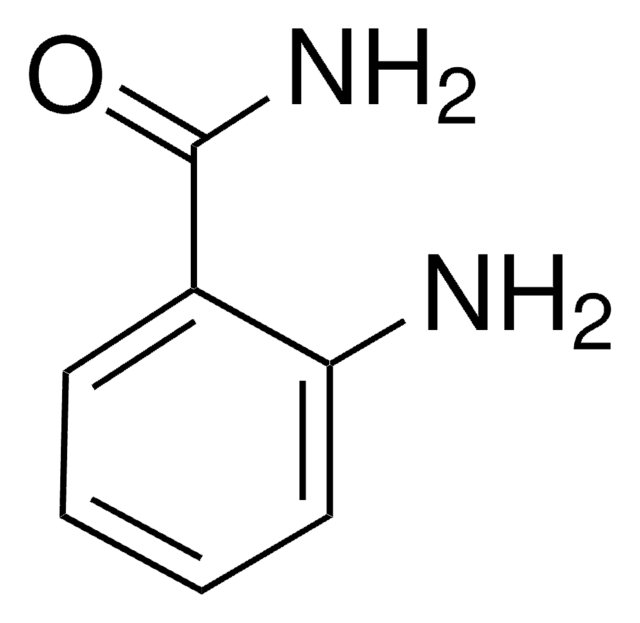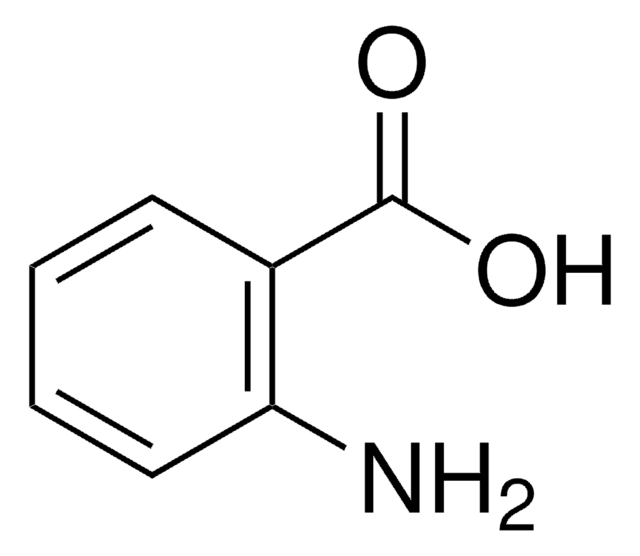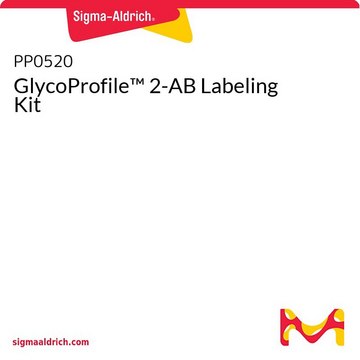A89804
Anthranilamide
≥98%
Synonym(s):
2-AB, 2-Aminobenzamide, Anthranilic acid amide
About This Item
Recommended Products
Assay
≥98%
form
crystals
mp
111-113 °C (lit.)
fluorescence
λex 330 nm; λem 420 nm(lit.)
SMILES string
NC(=O)c1ccccc1N
InChI
1S/C7H8N2O/c8-6-4-2-1-3-5(6)7(9)10/h1-4H,8H2,(H2,9,10)
InChI key
PXBFMLJZNCDSMP-UHFFFAOYSA-N
Looking for similar products? Visit Product Comparison Guide
Related Categories
Application
related product
Signal Word
Warning
Hazard Statements
Precautionary Statements
Hazard Classifications
Eye Irrit. 2
Storage Class Code
11 - Combustible Solids
WGK
WGK 1
Flash Point(F)
>365.0 °F
Flash Point(C)
> 185 °C
Personal Protective Equipment
Choose from one of the most recent versions:
Already Own This Product?
Find documentation for the products that you have recently purchased in the Document Library.
Customers Also Viewed
Articles
Glycosylation is known to have profound influence on various physiochemical, cellular and biological functions of proteins. Alterations in this modification are known to affect the immune system and have been associated with various pathological states such as cancer, rheumatoid arthritis, and inflammatory diseases.
Mass Spectrometry of Glycans, method comparison and products
Structural modifications of proteins are essential to living cells. When aberrantly regulated they are often the basis of disease. Glycans are responsible for much of the structural variation in biologic systems, and their representation on cell surfaces is commonly called the “glycome.”
Protocols
Mass Spectrometry of Glycans
Global Trade Item Number
| SKU | GTIN |
|---|---|
| A89804-10KG | |
| A89804-500G | |
| A89804-100G | 4061833401040 |
| A89804-5G | 4061832489414 |
Our team of scientists has experience in all areas of research including Life Science, Material Science, Chemical Synthesis, Chromatography, Analytical and many others.
Contact Technical Service







